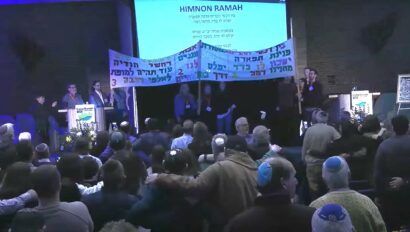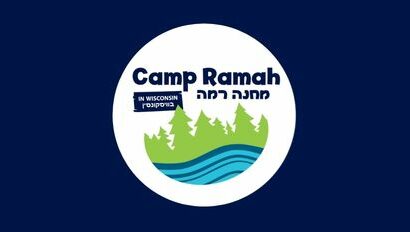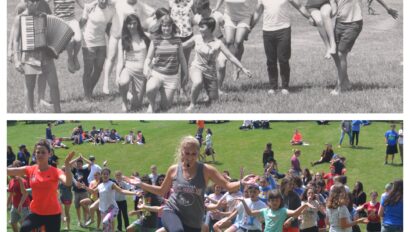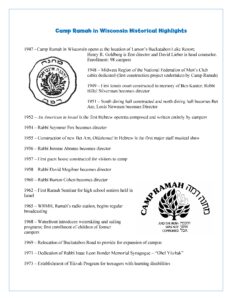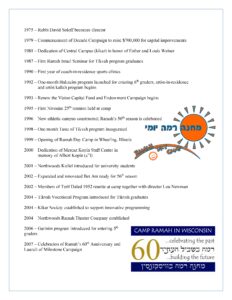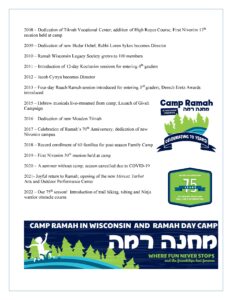
Photo from 1979 Season – from left, Rabbi Avi Kogen, Rabbi David Soloff, Phyllis Hofman, Rudy Turnquist
by Phyllis Hofman Waldmann
Member, Camp Ramah in Wisconsin Board of Trustees, and former Administrator and Consultant, National Ramah Commission
From the book, Ramah at 60, published in 2007
I began my career with Ramah when Rabbi Burton Cohen hired me in 1963 to work part-time in the Chicago office of Camp Ramah in Wisconsin. The office was located in the old College of Jewish Studies building at 72 East 11th Street, and I was Toby Litin’s assistant.
The first time I actually went to camp was in the summer of 1965. A few years later, I became the camp business administrator. Part of my job was to meet the administrators from the other Ramah camps. The meetings were held at the National Ramah office in New York, which was then in a brownstone building behind the Jewish Theological Seminary (JTS) on 123rd Street. The building also contained several apartments. Once while we were meeting, we heard screams and what sounded like gun shots. They were gun shots. A domestic argument had erupted in an upper-floor apartment, and someone had been shot. We quickly evacuated the office and continued our meeting at JTS.
In the early 1970s, I assumed the position of the National Ramah business manager. My first task was to move the Ramah office out of its 123rd Street location and into rented space at the Union Theological Seminary at 120th and Broadway. After we settled in, we set up a coffee station, and one of the regulars to join us for coffee was a young history professor named Ismar Schorsch.
As the business manager, I would visit each of the Ramah camps during the summer, some of them more than once. I met hundreds, if not thousands, of campers and staff. No two camps were alike, and yet they were all the same. I knew the routine of each camp and always began my visit with meetings with the business managers and directors, listening to how their summer was going and learning what I could do to help. Of course, they wanted to know how the other camps were doing. In the era before email and Internet, I was their source.
The saga of opening Ramah Darom is a long one. In the early 1990s, Rabbi Sheldon Dorph, then director of the National Ramah Commission, took it upon himself to work with the committee in Atlanta to make a Ramah in the southern United States a reality. I became one of Shelly’s assistants. We attended meetings, went to look at camp sites, and spent hundreds of hours working on the numbers. After the site was purchased and Ramah Darom was ready to open, we were there. The day the campers arrived was like no other day I had ever experienced – but then I wasn’t in Conover, Wisconsin, in 1947!
I would not have met all the wonderful people I came to know and love over these past decades – professors-in-residence, directors, business managers, bakers and cooks, bookkeepers, counselors, specialists, rashei eidot, and most important – the campers – if I had not accepted that part-time job in Chicago so many years ago. For all my hard work, and at times it was very hard, I have received so much in return. I am so proud of my years with Camp Ramah and so thankful for all the wonderful people who have been part of my life.
